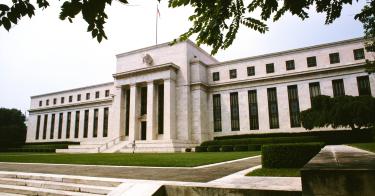President Trump had “a very good & cordial” meeting with Federal Reserve Chairman Jerome Powell last week. According to the President, he and Powell discussed everything, including “interest rates, negative interest, low inflation, easing, Dollar strength & its effect on manufacturing, trade with China, E.U. & others, etc.”
It’s nice that they had such a great meeting, especially given the president’s habit of publicly blasting the Fed, but it looks as though the administration still has not engaged the Fed on the single most pressing reform issue: the need to reduce the Fed’s footprint in financial markets.
As I’ve written before, bickering over interest rates, negative interest rates, etc., is largely a waste of time because the Fed has limited influence on these variables. More importantly, the Fed has yet to normalize monetary policy in the wake of the Great Recession. The only way the Fed can truly normalize is to shrink its footprint and end its experimental programs.
Yet all signs suggest that the Fed is poised to move in the opposite direction.
Politico’s Victoria Guida reports that the Fed’s latest effort to calm financial markets consisted of pumping $100 billion per day into the so-called repo markets, a key short-term lending market. The problem, which began a few weeks ago, is that overnight interest rates in these markets were spiking above the Fed’s target range because of a shortage in reserves.
Ironically, even though the system is now – thanks to the Fed – flush with nearly $1.5 trillion in excess reserves, the reserve shortage is largely a mess that the Fed created. (New capital bank capital rules, both informal and formal, are also making the situation worse).
As part of its repo market intervention, the Fed has committed to purchasing $60 billion per month in Treasury bills from now through the end of the year. By the time it’s all over, the Fed will have created another $250 billion to $300 billion in new reserves, reversing most of the actions it had taken during the last two years to shrink its balance sheet.
To be sure, the Fed has engaged in repo market transactions to conduct monetary policy for decades. The size of this recent intervention, though, is well beyond the range of what was normal prior to the Great Recession.
Due to the size, the Fed is trying to convince the world it is not undertaking another round of Quantitative Easing (the infamous QE programs that ballooned the Fed’s balance sheet after 2008), but that scary name misses the point. The problem is not whether the Fed is purchasing long-term or short-term assets to stimulate the economy; the problem is that the Fed’s footprint in financial markets keeps expanding.
As Federal Financial Analytics’ Karen Petrou noted: “The biggest danger of the Fed staying in the repo market is that it cements the expectation that the U.S. central bank will protect not just banks in a liquidity squeeze but volatile markets that are inconvenient to monetary policy. That’s moral hazard.”
The only thing to add is that federal policies keep broadening the scope of the Fed’s mandate, making the situation even more dangerous. As Cato’s George Selgin put it: “The Fed is in danger of becoming the whole U.S. money market. It’s very difficult to tease out all the implications of that.”
It is very difficult to comprehend – should the Fed continue on this path, it will be more heavily involved in credit allocation than it ever has been (outside of the two World Wars). What’s strange, though, is that the Fed keeps going down this road even though it can’t possibly want to be in the position of allocating credit throughout all short-term credit markets.
Sadly, nobody would be in this mess if the Fed had ditched its crisis-era “floor” system and shrunk its balance sheet sooner. Things are much more complicated now, but the Fed can still reverse course before it’s too late.
Selgin has two excellent posts at the Alt-M blog that provide all the details and several links to other detailed pieces by (among others) Stephen Williamson and Bill Nelson.
The short version is: The Fed will have to adjust the way it deals with its foreign repo pool and the U.S. Treasury’s general account, and this will likely take some cooperation with Treasury (and maybe even Congress). Volatility in the foreign repo pool and the Treasury account has been instrumental in pushing the Fed to maintain its new floor operating system, but that framework is what led to the increased reliance on (and volatility in) these accounts in the first place.
The Fed’s new operating framework has to be dismantled as part of a concerted effort to “restore the attractiveness of alternative investments that don't gobble-up bank reserves.” The next time the president meets with Powell, they shouldn’t talk about much else.
This piece originally appeared on Forbes https://www.forbes.com/sites/norbertmichel/2019/11/25/president-trump-should-focus-on-shrinking-the-feds-footprint/#a8b526426824



